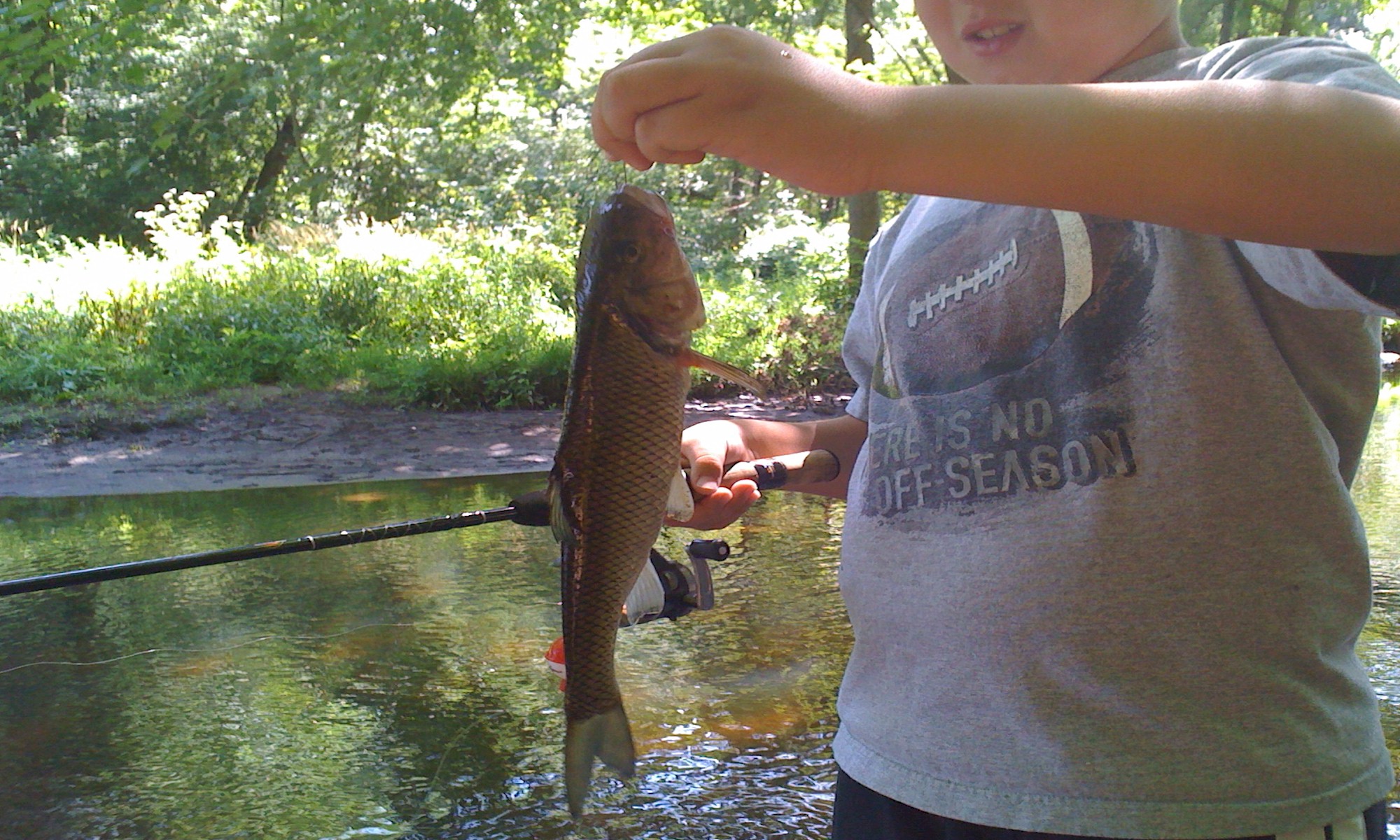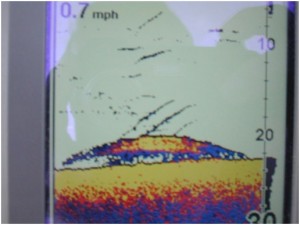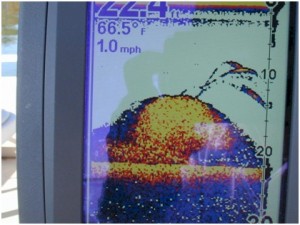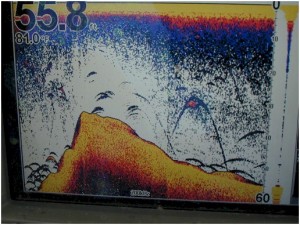Hi folks!
It’s been a while since I’ve written – I’ve had my first fishing trip this season with my younger son. He caught some nice sunnies; I’ll post the pictures in a few days.
But today I’ve got a guest blog post from Mr. Jake Bussolini! Hope you enjoy it!
Changing My Freshwater Fishing Habits
By Jake Bussolini
From the time I started freshwater fishing at the age of 6, in a small New England town, until today at the age of 76, settled into a home on a beautiful North Carolina lake, I have gone through a major transformation as a fisherman. I started fishing for trout with worms in a small pond, controlled by a local fishing cub. I later discovered the added challenge of fly fishing for those trout in small streams and rivers. I took a short break for college and then as my career developed I started fishing different lakes and rivers, wherever and whenever I had the opportunity.
My career had nothing to do with fishing, since I started as an aerospace engineer and later moved into management, or did it indeed create a natural flow into my fishing experiences and later, influence my writings. I discovered when I moved south to North Carolina, that fishing here was different here in the south. Many of the lakes in the south were man- made for the generation of electric power, as people moved south and the demand for power grew. Generally a lake built for power generation was constructed by clear cutting all growth, demolishing all structures to provide water that was free of material that could damage power generating equipment. The result was water that lacked all of the underwater habitat for fish that I was accustomed to in natural lakes.
Fishing these waters was a whole new experience and I found it necessary to become a student of the waters to better understand how the fish behaved and of course how they could be caught. This is when I realized that I had an advantage with my scientific background, because I started trying to understand the science behind fish behavior. Because I was learning a whole new fishing technique, I was also taking detailed notes and photos which eventually led to writing and publishing four books about freshwater fishing. The unique thing about my books was the blending of the science of fishing with the sport of fishing.
At this point in my fishing life I also realized that technology was playing a more important role that it ever before had played, in the fishing experience, especially with fish finders, which I define simply as Sonar equipment. I had always been accustomed to fishing in areas where there was structure, because the fish were always around structure. I didn’t even understand why the structure attracted fish, I just knew that it did.
As I developed a more detailed knowledge of the behavior of fish, I realized that it is all about survival and for fish that means that to survive, they must eat and avoid being eaten, and they must procreate to keep the species in existence. It was all just that simple. To take advantage of these simple facts, I became an expert on Sonar equipment because that allowed me to better understand the bottom structure, the location of food sources, and the identification of the fish species that I was seeing. Everything in my books is based on this knowledge. Recognizing the image of a large catfish near the bottom as shown below, told me where to put my bait.
Understanding that finding a school of small perch would also put my on bigger fish that would be feeding off of that school of bait, was a valuable bit of knowledge that would increase my catch rate. The Sonar image below shows such a school of perch and also illustrates how the bass will normally feed off of that school.
Even without the bottom structure found in naturally created waters, Sonar can show a fisherman how valuable the points and drop offs are in attracting fish. The Sonar image shown below illustrates how fish reside near these drop offs.
I have developed a library of thousands of these Sonar images over the years and thanks to digital cameras and small recorders, I was also able to record the type and size of the fish that I caught when these Sonar image photos were taken. With that information and a basic understanding of how Sonar works, it is possible to identify the species of fish being observed and normally the size and weight of the fish. Matching the Sonar photos with the notes taken provides a valuable library of information that has permitted me to improve my catch rate from about 2 per hour to nearly 5 per hour.
Technology is continuing to change the way we fish. The new side scan Sonars are providing even more and accurate data on bottom structure and fish location. New lures and rigs are attempting to create the image of small bait schools to more easily attract the predator fish. The latest creation called the Hydrowave, is artificially generating the sound of large schools of bait fish to excite resting bass. It’s exciting for me to look back at the changes that have taken place in my lifetime and project how different fishing will be in the future for my grandchildren. However, I sometimes remind myself that there will never be anything invented that will replace the thrill of retrieving a 5 pound brown trout with a simple fly fishing rod and reel, from a small mountain stream.
Jake Bussolini’s books about freshwater fishing can be reviewed on www.jakestakeonfishing.com.
Catch you later!





 Go check out that bass fishing show now!
Go check out that bass fishing show now!